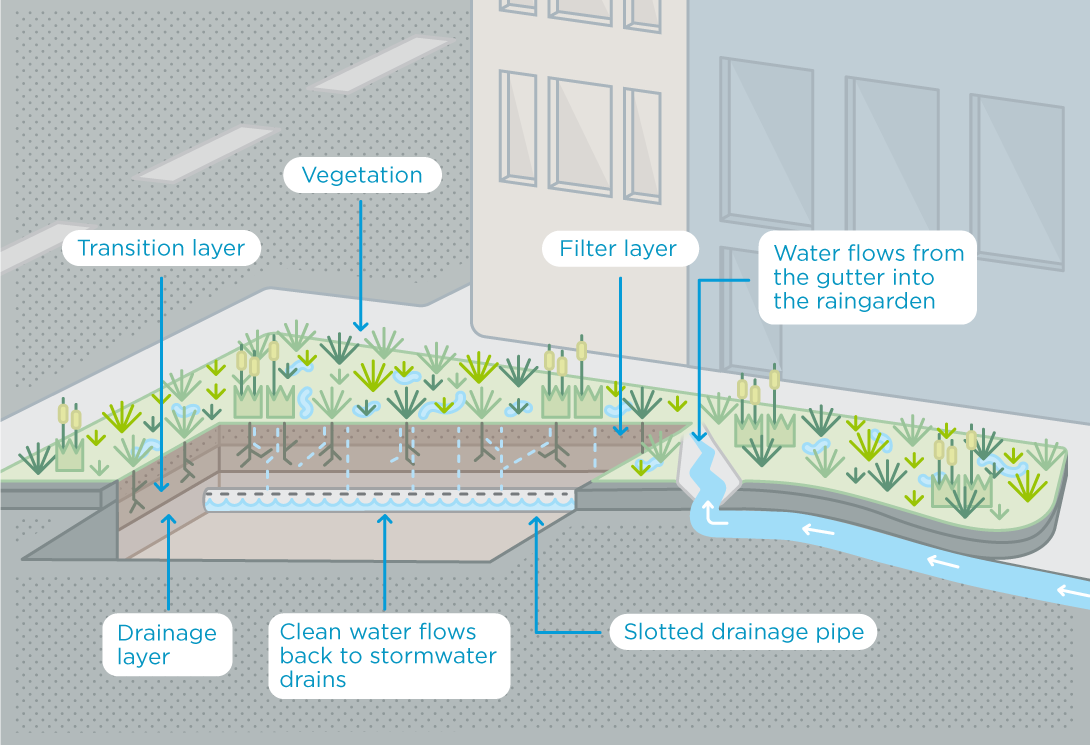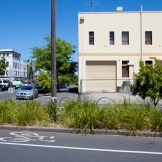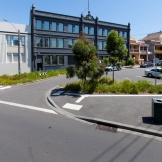Raingardens
These specially designed garden beds improve the health of our waterways and reduce stormwater flows.
Notice: Undefined property: stdClass::$pageInfo in /var/www/html/urbanwater_prod/wp-content/plugins/fluid-video-embeds/fluid-video-embeds.php on line 681
Notice: Trying to get property 'totalResults' of non-object in /var/www/html/urbanwater_prod/wp-content/plugins/fluid-video-embeds/fluid-video-embeds.php on line 681
Raingardens, also known as biofiltration or bioretention beds, are gardens beds that use plants and soils to capture, filter and clean stormwater.
Raingardens are commonly located near buildings, roads and other impermeable surfaces. They capture runoff and remove pollutants before the stormwater enters waterways.
Raingardens are also used to slow the flow of stormwater. This protects aquatic habitats and reduces the risk of flooding.
Any plants can be used in raingardens, though some species, including native plants, are more effective at removing pollution.

Beneath the surface of a raingarden, special layers of sand work to remove pollution from stormwater.
How a raingarden works:
Raingardens contain layers of sandy soil that filter litter and pollutants from the water. When it rains, water is directed into the raingarden from a nearby impermeable or sealed surface. It is naturally cleaned by the raingarden.
Invisible pollutants, such as phosphorus and nitrogen, are removed by a special ‘biofilm’ that forms on plants and grains of sand. Once clean, the water exits the raingarden through a pipe below the soil into the stormwater drain.
Types of raingardens
Planter box
These are positioned above the ground to collect stormwater from a diverted roof downpipe. Stormwater filters through the raingarden before connecting to the stormwater system.
In-ground
These are positioned in the ground to collect stormwater from hard surfaces or a diverted roof downpipe. Stormwater filters through the raingarden before connecting to the stormwater system.
Vegetable
A vegetable raingarden is sub-irrigated, which means that the water enters at the base of the garden. This helps to prevent the vegetables being submerged after heavy rain. Water is used more efficiently as there is less surface evaporation. Vegetable raingardens are typically in raised planter beds.
Tree pit
These small raingardens capture stormwater runoff from roads. Unlike a typical raingarden, they contain a single tree and are well suited to highly urbanised settings. Read the raingarden tree pit case study to learn more.
Raingarden technology can also be used as part of a stormwater harvesting system. Read our Fitzroy Gardens case study to learn more.
What is biofiltration?
The impact of Urbanisation on the water cycle
If there is litter among the plants in a raingarden it is a good sign that the raingarden is working properly. Raingardens are designed to collect the litter before it enters our waterways.
- Raingarden tree pits
- Howard Street raingardens
- Fitzroy Gardens
- Build your own raingarden










